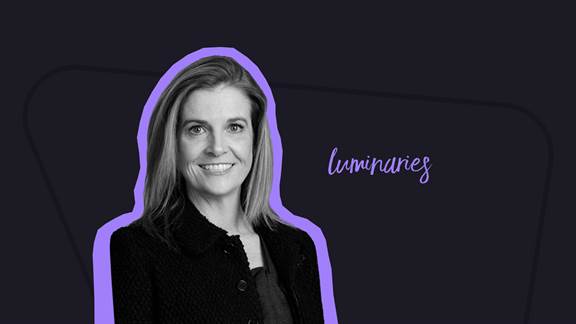JARED JOHNSON: Katie, from a client perspective, what do you think it's going to look and feel like to be a Northern Trust Wealth Management client in five years? What do you think is going to be the same? What's going to be different? Are there certain views into the markets or portfolios that are becoming more or less valuable or different types of touch points Northern clients are interested in?
KATIE NIXON: In considering this question, I separated the what from the how because I do believe what we provide to clients and what they expect from us will probably remain pretty much the same.
They expect us to be their trusted advisor. They expect us to have a deep knowledge of their goals. They expect us to be experts in portfolio and asset allocation theory. So I think the what is going to probably stay the same, but perhaps the how will be different, and I do think that we'll be using different methods to deliver our value proposition to clients. First thing, and I know we're going to talk about technology a little bit later, but I think the way that we deliver [technology] might be different over time — much deeper use of digital tools and digital communication tools. We'll probably be using, as advisors, different tools in order to deepen the discovery process. What we've learned from our clients in the last several years is the importance of a really truly deep and customized discovery process, so enabling our partners to do that in a high quality way is going to require technology.
So I'm thinking about things like our goals-driven wealth management framework that is really enabled by our GPS application [Goals-Powered Solutions — an investment approach that aligns clients’ portfolios with their life goals, rather than focusing solely on maximizing returns and minimizing risk], and perhaps opening up parts of that application for clients to work with on their own. One of the things that we've heard is that clients, once they see the power of GPS, as we call it, is they want to fool around with it. They want to take it home, they want to do some what-if scenarios. They might want to do some what-if scenarios that they're not even comfortable talking to us about. What if they make a decision to sell their business? What about a divorce? Things like that, that they might want to noodle around with before they talk to their advisor about it. The fact that we're going to still be our client's trusted advisor won't change, but perhaps how we deliver that will.
JJ: Sticking to the theme of collaboration, will the partners or advisors at Northern Trust change their methodology to be more collaborative? How would you expect to lead that kind of change and get Northern employees comfortable with a new way of working and new technologies? There's some learning curve, and it's always difficult in a large institution — especially like Northern that's been around for 130 years, to change — so what are some of the things that you would do or that you see happening at Northern to change culture and to help your employees adapt?
KN: Great question, and it's a really important question, because when you change anything at an organization like Northern Trust that has 130 years of experience in dealing with clients, you want to do so in a manner that at the end of the day, you get the best of both worlds.
You maintain that culture that's been building for 130 years around taking care of clients, client comes first, the fiduciary culture, but you also want to make sure that you have that innovation engine and that you're constantly learning and growing. To achieve the best of both worlds is really hard. But I think it's an evolution, not a revolution, and I think in launching goals-driven wealth management seven years ago, we did so much work upfront in making sure that the methodology was pristine. We did so much work upfront making sure that the tools would support the client conversation. What we didn't realize or recognize is that change is just hard. It almost doesn't matter if you have the best process and the best tools and the best training. Change at large organizations takes time, and so it's much better to go into it believing that it's an evolution and not a revolution.
That's the approach we'll take with the evolution of goals-driven into being a much more collaborative experience. It requires the development of completely different muscles. My job as CIO is to make sure that we have the right exercise equipment that will help develop those muscles, tone those muscles, and prepare our portfolio managers for very different kinds of conversations, recognizing always, though, that it's going to take time. We can't force a big change management effort onto a very large advisor base in a company that has this 130 years of experience. We're really careful about the way that we engage with it, but what's been really interesting to me is, when it's introduced this way, partners really embrace it, because it helps them become better advisors. Once they see the value to them as advisors, then the change kind of becomes very self-fulfilling. Once it stops becoming something you're making me do, and it becomes something that I want to do because it makes me better, it makes me feel better about what I do and what I deliver to clients, then you're on the right track. You tend to see just it becoming a very positive feedback loop and self-fulfilling prophecy.
